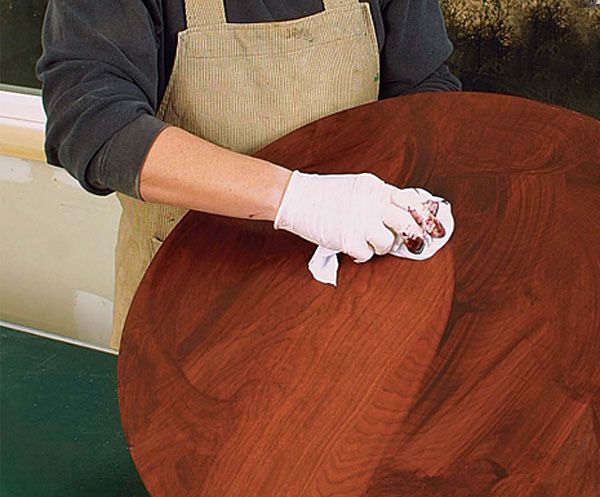Gel Stain User’s Guide
Easy to apply, these stains are forgiving, even on blotch-prone woods
Synopsis: Gel stains are often spurned by serious finishers but not always for good reason, according to Teri Masachi, a professional finisher. In this article, she reveals the many benefits of gel stain: It is easy to apply; it can be used to even out difficult, blotch-prone woods, such as cherry and pine; and it can be used to achieve similar results on multiple types of wood. The article also includes an overview of various products on the market.
Wipe-on stains have become enormously popular in the last few years, and none more so than the gel versions. Sold as one-step, foolproof finishes that need only a rag as an applicator, gel stains appeal to that large group of woodworkers who dislike finishing. While many serious finishers spurn these stains assuming they have few good qualities, others find ideal uses for them.
Gel stains are forgiving, but they won’t hide the sins of bad sanding marks, spots of filler or glue smudges. Contrary to popular belief, these combination finishes still need a clear topcoat in most circumstances. Different brands of gel stains also vary both in their handling characteristics and in their color rendition of the same named stain. However, for those projects made of difficult, blotch-prone woods, such as cherry and pine, gel stains may be the best solution. Their ability to layer color makes them easy to use as glazes. For these reasons and others I will demonstrate, these small cans of thick color deserve a spot on everyone’s shelf.
One of the strongest selling points of a gel stain is its ease of application. There is no need for a spray gun, a specialty brush or even a spotless shop—only a nice, soft cloth, such as an old T-shirt. Gel stains are all wipe-on/wipe-off products, which results in very little wet surface (tacky at most). A gel stain is not like a traditional thin pigment stain that never gets deeper in color no matter how many coats are applied. Rather, a gel stain builds up color with each application, so don’t apply a heavy first coat for a darker color. Simply apply a second one.
The end grain on tabletops and raised panels often absorbs regular stains in dark, ugly contrast to the straight grain around it. Likewise, some cherry and pine boards turn blotchy when a stain has been applied. One solution is to use a stain controller (see FWW #156, pp. 113-114), such as a thin coat of clear gel varnish or dewaxed shellac, but using a gel stain may negate the need for this step.
For the full article, download the PDF below:
Fine Woodworking Recommended Products

Foam Brushes


Odie's Oil























Log in or create an account to post a comment.
Sign up Log in